In the Studio: Samira Abbassy
“My attempt in depicting the human form is almost like a psychic x-ray, so the n...
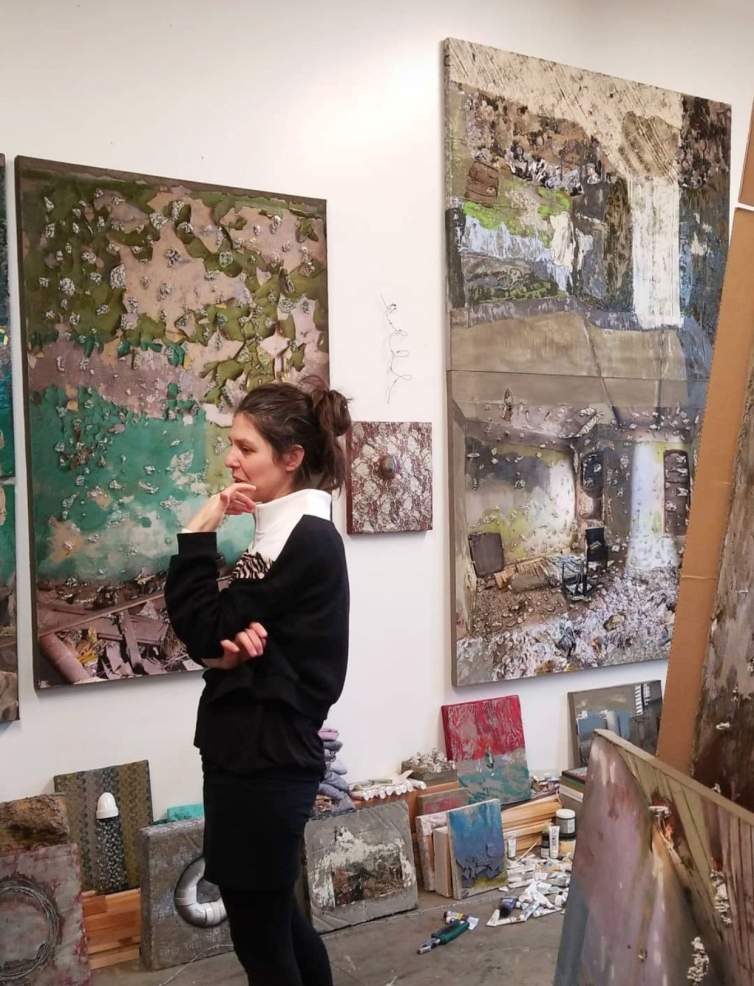
Naomi Safran-Hon is a Brooklyn-based artist and a 2023 Joan Mitchell Fellow. We interviewed her about her work and creative practice in February 2024. The following is an edited transcript of that conversation.
I make work that I call paintings, but they actually sit on the cusp between photography, painting, and sculpture. I take photographs mostly of architectural spaces, print them large-scale, and mount them onto canvas. Then I destroy the photograph in the process of making the painting. I cut holes in the surface of the painting, glue lace, and push cement through the lace, so they become three-dimensional and tactile.
I’ve come to realize that my work comes out of trauma, which is a word I've never used before in this context. My formative years were spent in Haifa, Israel. In the ‘90s, there were suicide bombers. It would be a normal day, and then a bomb explodes and a lot of people die. As a young person, I was grappling to understand what brings a person to such an act of extreme violence. Since I came to the US almost 20 years ago, I've been obsessed with making work about my homeland. Even though I've been here for so long, I am still kind of consumed by it. And now with the war in Gaza, of course, the extreme violence erupted again like an earthquake shaking the ground. It reminded me why I left.
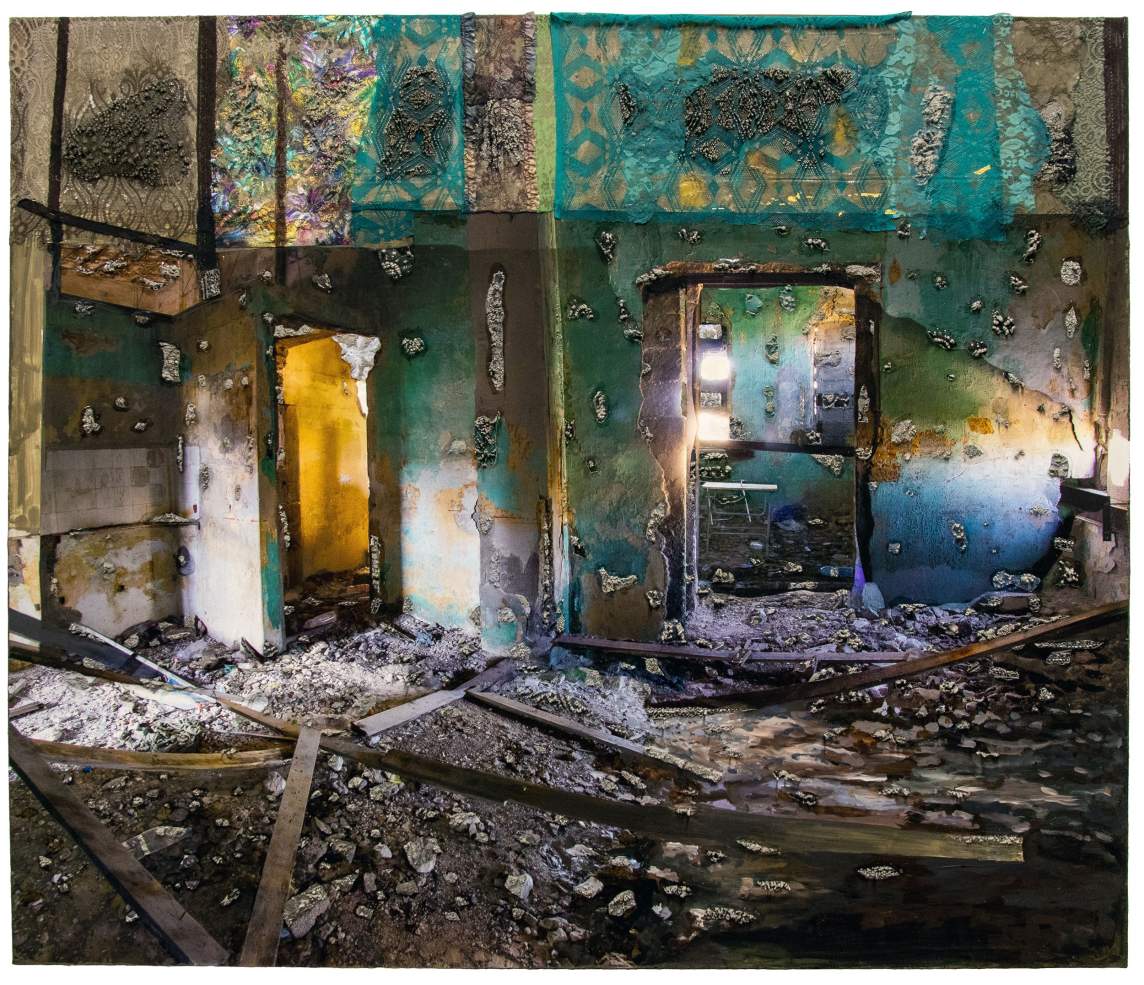
The photographs that I use in my paintings are from a neighborhood in Haifa, Wadi Salib, that I visit whenever I go back home. I photograph these structures, these damaged buildings, and then return to my studio in Brooklyn and make paintings. So in a way, I am reconstructing these spaces in the hope to retell the stories that the structures hold in them.
I'm not a war photographer. I don’t go in and photograph the destruction and show everybody, “Look at the injustices, look at how war is terrible.“ That's not my job. My soul is too fragile. But these destructions will carry on for generations. And the children that are born today, or even in a year or five or 10, will still have to deal with the damage and the brutality of war even after it has passed, or continued, like in this conflict.
The structures in my hometown hold that brutality. They weren't necessarily bombed like in Gaza, but the people who lived there did leave because of war and were never allowed to come back. The structures hold those stories in them, in the architecture, in the color of the walls, in the peeling paint. And then time and history also move into these spaces. I have found this neighborhood in Haifa to be a kind of metaphor for the conflict. It’s about home, about displacement, about belonging. This is my personal journey, but I hope that the viewer can see in it their own stories of immigration or family relationship to the home or a place.
Think about an envelope and a letter. The work is an envelope and I put the letter in. But when you see the work, you write your own letter. You embed the content in it, which then becomes a different letter because you're a different person and you have a different set of life experiences and emotions. It's very hard for me to change the letter; I can only present this work in this way, but I feel it is so much bigger than that.
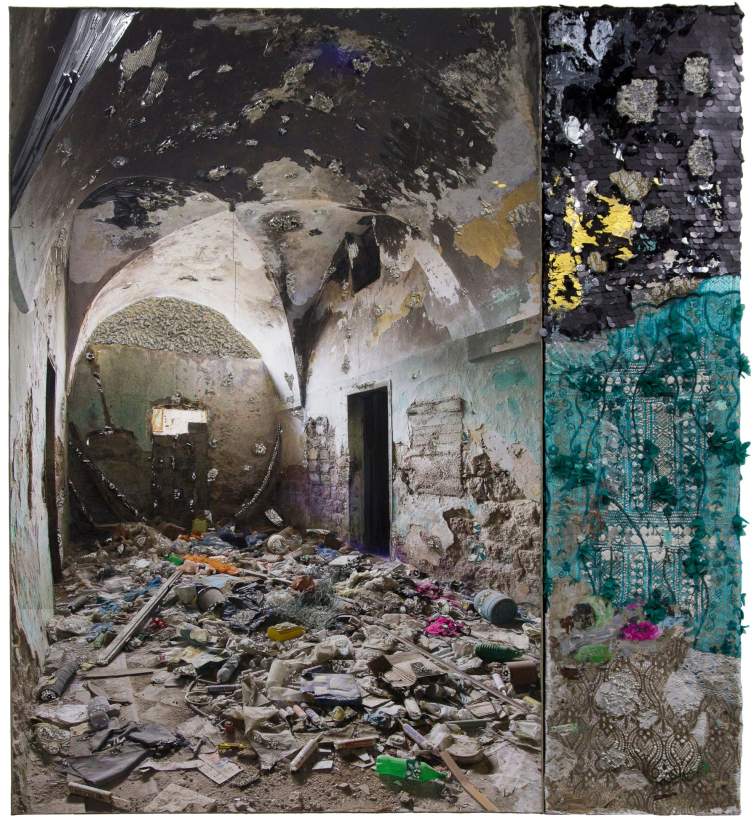
Growing up in Israel, I was very influenced by my conceptions of artists being change makers, having this radical viewfinder into the world and challenging conceptions. And that's kind of what I wanted to do. When I came to the US, I realized that artists come in all shapes and forms and ideologies, but I still hold true to the core belief that art can change people. And that people change the world.
So my ambition is that my work has an impact, that the viewer meets the work and is changed by it, that they are moved by it, that they ask questions that they didn't even know existed before, or are curious about new things, or moved to action.
When the 7th of October happened and the ensuing violence, it had a paralyzing effect on my work. The level of violence, the intensity of it. It was shocking. It was like this volcano erupted. And I like the metaphor of a volcano because it was always underneath the surface. I felt like, what am I doing in my studio?
I’m still processing it, but my reaction to these events in my homeland has been that I want to make violent work. How do you make violent paintings? The events of the last few months have been so violent and it is hard to find the words to describe it. It is like the 7th of October is happening again every day in Gaza. I wonder what kind of images can deal with such events, so my gut wants to make violent paintings.
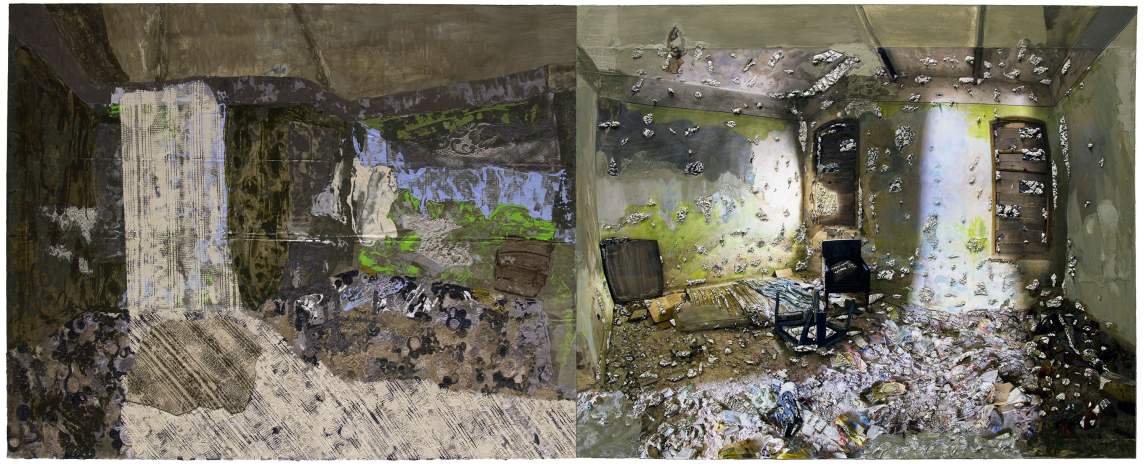
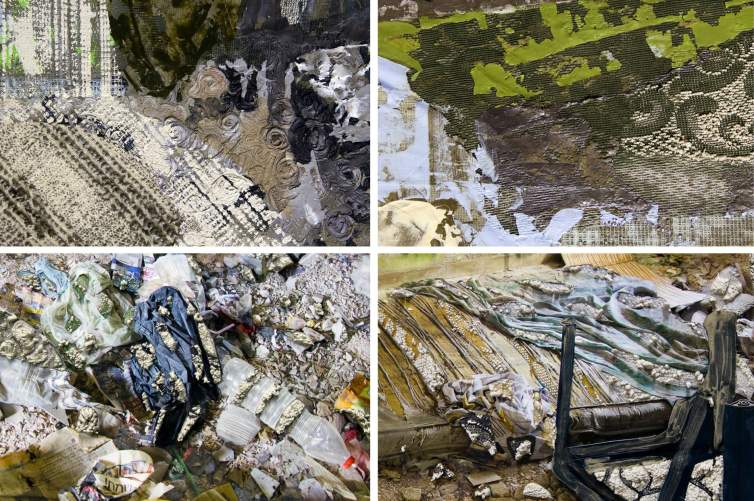
In my work, the relationship between the material, the meaning of the material, and representation is very important for me. The process of photography is flattening. You photograph and you flatten the world. By pushing cement through lace into the flat photograph, I create space within the surface of the painting that adds to the spatial dimension of the room or of the architecture. It's like a window into a three-dimensional space. And then the cement and lace are pushing out onto the viewer.
Another layer in my work is the element of deception: what is true, what is false, what do we believe in, what is fiction to us. It is such a rich territory, sadly. For example, some people claim the 7th of October didn't happen. And then there are people in Israel who don't believe the things that are happening in Gaza right now. What is your truth? And what is your humanity? For me, it's hard to believe why people would fabricate such distress, such violence. What have we become if we don't believe when people are suffering?
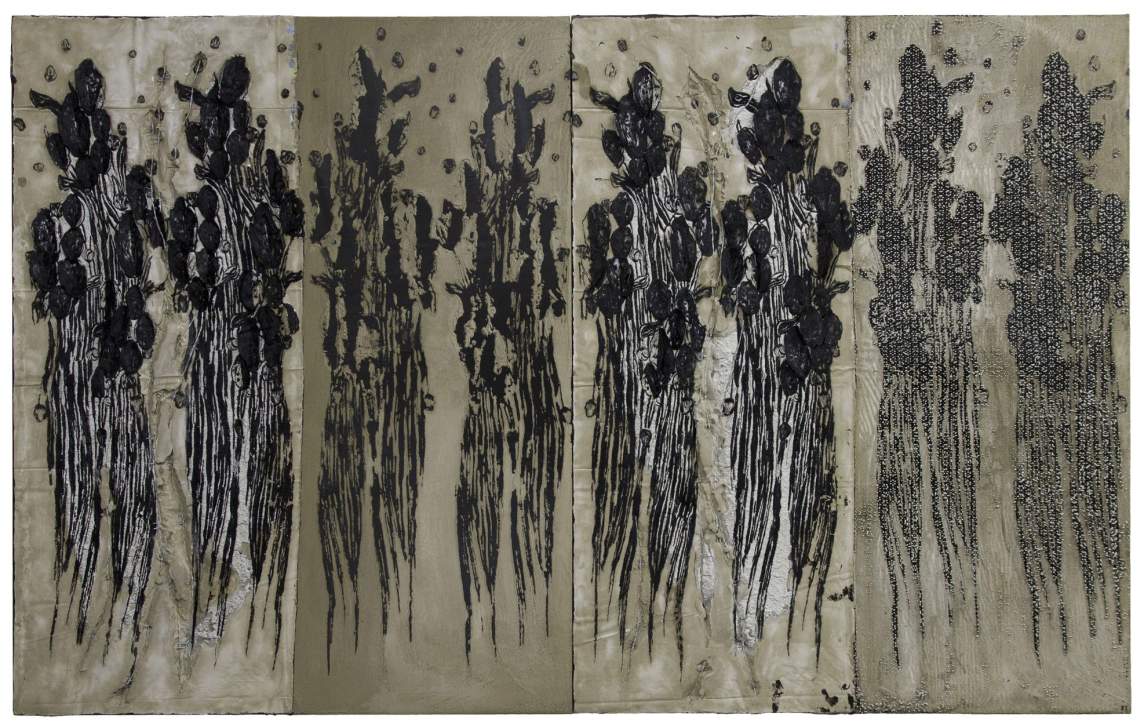
I'm interested in illusion and truth-making, which goes back to this relationship between photography and painting. Photography is “the truth”—although now with an AI, who knows. And painting has always been “the fiction.” But also, there's a realness in painting and the actuality of the material touching the canvas. Maybe that becomes more real than the reality of what we believe, or what newspaper we read. And that relates to where you come from. When I went to school, I learned one narrative and then I had to learn another narrative. It’s the same in the US. What narrative are you taught?
For me, being here in the US for so long now, I start seeing that there are points of parallel in terms of how these countries have oppressed and keep oppressing, how they have systematic racism ingrained in their structures, and how difficult it is to move beyond that. I hope my work—falling between real and fiction, photography and painting, cement and representation of cement—asks some of these questions about illusion.
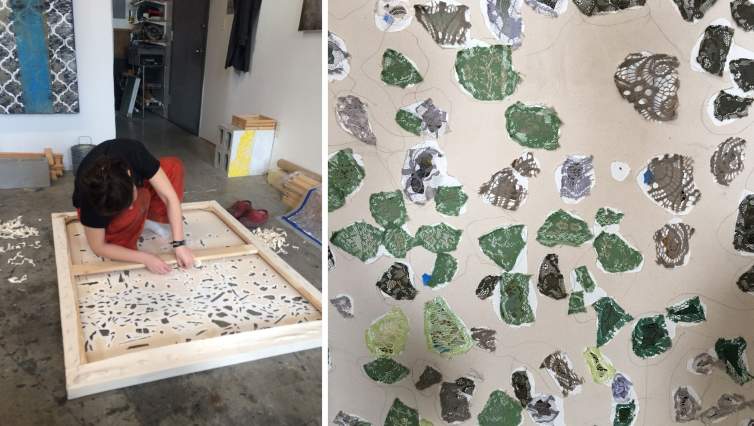
When I’m making my work, I don't paint on the wall. I paint on the floor or kind of freestanding, cinder blocks holding the painting up, so I can glue the lace pieces after I make the holes. I'm currently working on this series where I separated the architecture from the landscape, starting to think more about the natural world. It's the same photo, but I'm going to make two paintings out of it. I'm going to continue the architecture out with cement and lace, and I'm going to try to continue the vegetation. The photograph will only be half of the painting.
With this work, I’m thinking about the destruction of war and conflict not just on the level of human life but also the physical ruins and the relationship with nature. The cities that we live in have these cycles of building and destruction—the demolishing of a building, the reconstruction of a building. We are so quick to throw everything away. What do you do with all this destruction? If you look at Gaza City right now, there’s the humanitarian crisis, of course, and it’s also a catastrophe for the natural world with all of the cement ruins. It's going to pollute all of the Mediterranean. So I'm thinking about works that highlight this element of the destruction.
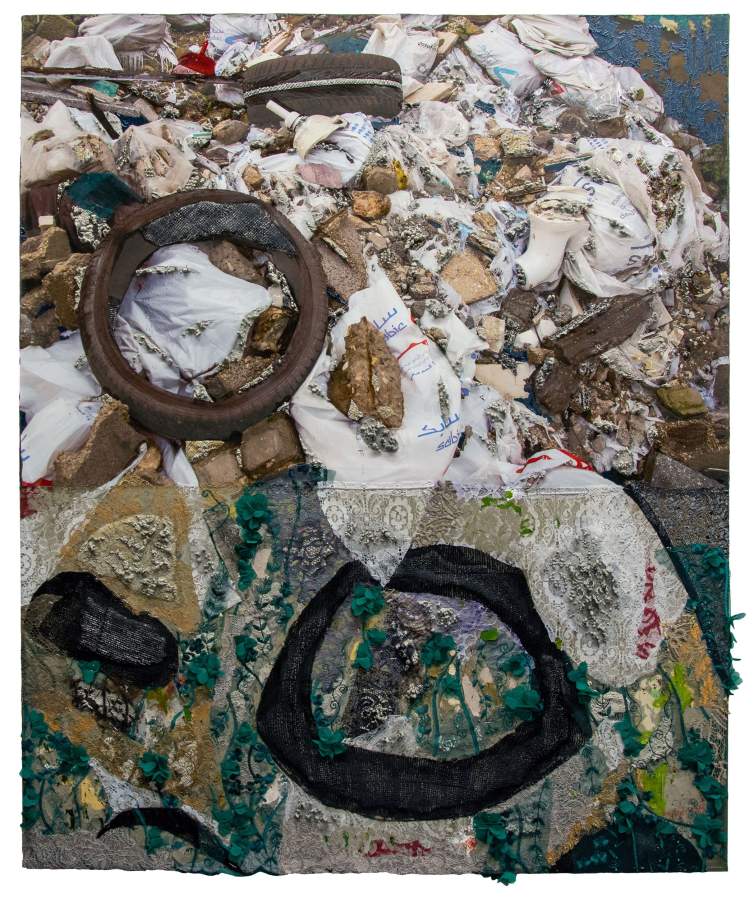
I have another new piece that I just finished with an image of this pile of construction debris, with these three tires and cement, with no visible architecture. Half of the upper part is a photograph, then I cut holes and put cement through. The bottom part is just lace and cement. From afar it looks pretty continuous. But as you come close—and I always recommend coming close—you start seeing the way that it falls apart. There’s cement that is flat, but then there's parts that are coming out, too. It’s very textural.
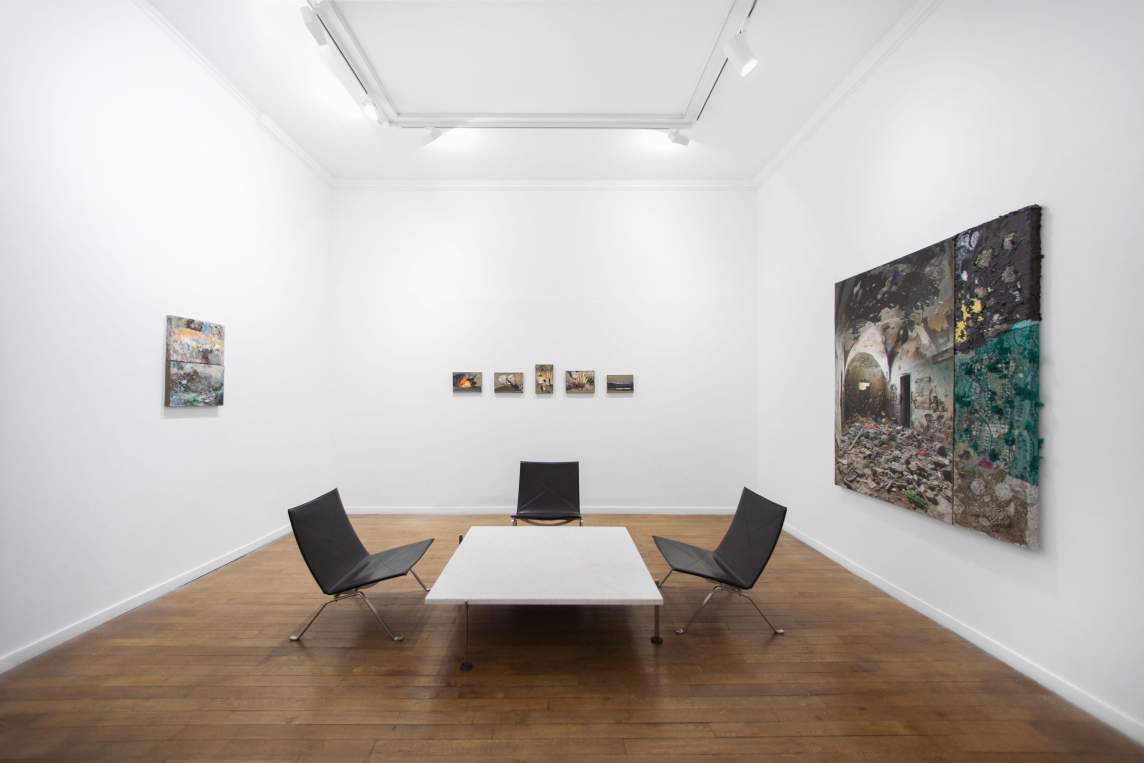
I have an exhibition that’s currently on view at RX&SLAG in Paris, which is up until April 13. And I’m planning a solo show with SLAG New York, for 2025, so I’m making work for that. Beyond the solo presentations, I'm really interested now in doing more group shows. When you are in a solo show, you're in a dialogue with yourself. But I want my work to be in dialogue with my peers, with my contemporaries, especially around topics of a political nature, and around identity. I have my own particular lens within my work, but I'm looking for curators who might present it with a very different kind of prism or have a different viewpoint into the work.
Everyone is closely following the Israeli-Palestinian conflict right now. This is a call for action. I dream of a show with artists who are dealing with this subject tangentially or directly. What is art if not a place to have difficult conversations? But the issue is that it's really hard to find institutions or curators to deal with this subject, because it's so polarizing. I really want to put together a group of artists who are interested in having a conversation that's different, that is productive, that holds space for such dichotomies. I'm not afraid of it.
Art is part of culture. To change culture, we have to do new things and highlight new ideas and new stories. That’s how you move culture forward, and I hope to be part of that movement forward.
Interview and editing by Jenny Gill. Learn more about Naomi Safran-Hon’s work at naomisafranhon.com and on Instagram.